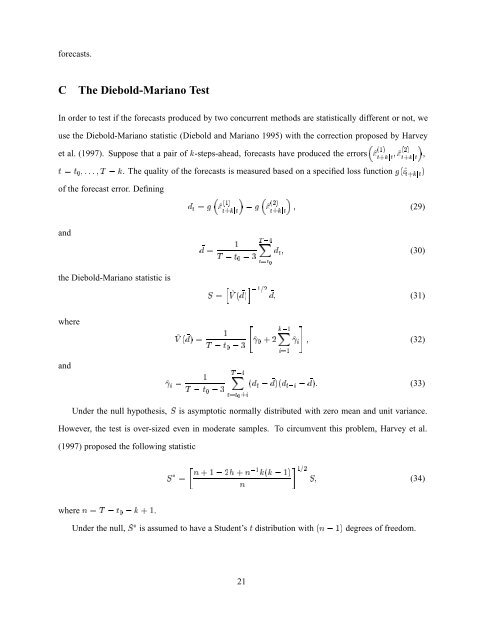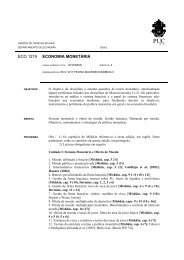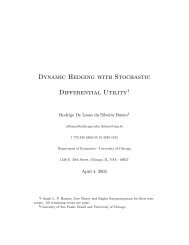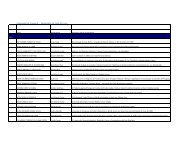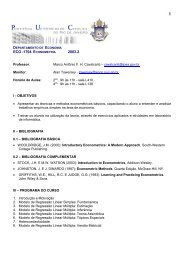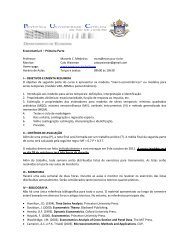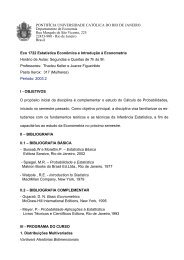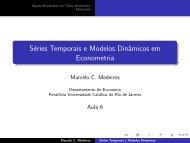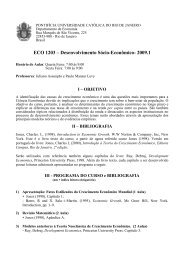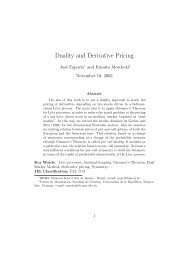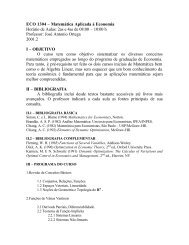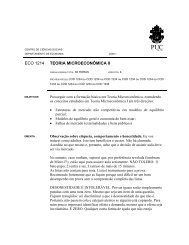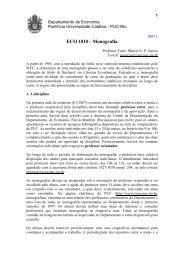Smooth Transitions, Neural Networks, and Linear Models - CiteSeerX
Smooth Transitions, Neural Networks, and Linear Models - CiteSeerX
Smooth Transitions, Neural Networks, and Linear Models - CiteSeerX
Create successful ePaper yourself
Turn your PDF publications into a flip-book with our unique Google optimized e-Paper software.
forecasts.CThe Diebold-Mariano TestIn order to test if the forecasts produced by two concurrent methods are statistically different or not, weuse the Diebold-Mariano statistic (Diebold <strong>and</strong> Mariano 1995) with the correction proposed by Harvey et al. (1997). Suppose that a pair of -steps-ahead, forecasts have produced the errors,´½µØ·Ø ´¾µØ·ØØ Ø ¼ Ì . The quality of the forecasts is measured based on a specified loss function ´ Ø·Ø µof the forecast error. Defining Ø ´½µØ·Ø ´¾µØ·Ø (29)<strong>and</strong> ̽ Ø (30)Ì Ø ¼ ¿ØØ ¼the Diebold-Mariano statistic isË Î ´ µ ½¾ (31)where<strong>and</strong>Î ´ µ½Ì Ø ¼ ¿½ Ì Ø ¼ ¿ÌØØ ¼· ¼ ·¾ ½½ (32)´ Ø µ´ Ø µ (33)Under the null hypothesis, Ë is asymptotic normally distributed with zero mean <strong>and</strong> unit variance.However, the test is over-sized even in moderate samples. To circumvent this problem, Harvey et al.(1997) proposed the following statisticË £ Ò ·½ ¾ · Ò ½ ½¾´ ½µË (34)Òwhere Ò Ì Ø ¼ ·½.Under the null, Ë £ is assumed to have a Student’s Ø distribution with ´Ò½µ degrees of freedom.21


